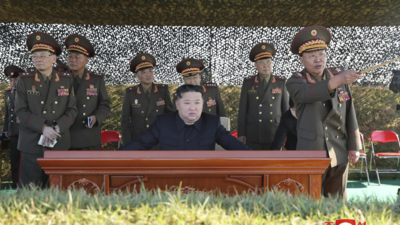North Korea has officially declared South Korea as a “hostile” state in its constitution, marking the first time Pyongyang has acknowledged the legal changes called for by leader Kim Jong Un earlier this year.
The announcement came after North Korean soldiers blew up roads and railways connecting the two Koreas earlier this week, a move that North Korea’s official Korean Central News Agency (KCNA) described as “an inevitable and legitimate measure taken in keeping with the requirement of the DPRK Constitution which clearly defines the ROK as a hostile state.”
The deterioration of relations between the two Koreas has reached a new low, with Kim defining Seoul as his country’s “principal enemy” in January and expressing disinterest in reunification.
The recent actions taken by the North Korean army to physically cut off roads and railways leading to South Korea was “part of the phased complete separation of its territory, where its sovereignty is exercised, from the ROK’s territory,” KCNA said.
Last week, North Korea held a key meeting of its rubber-stamp parliament, confirming the amendments to the country’s basic law in line with Kim’s demands. However, the state media did not provide further details about the constitutional changes.
Previously, under a 1991 inter-Korean accord, relations between the North and South were defined as a “special relationship” as part of a process aimed at eventual reunification, rather than state-to-state relations.
In addition to the border reinforcement, North Korea has also accused Seoul of using drones to drop anti-regime propaganda leaflets on the capital Pyongyang. Kim convened a security meeting to direct a plan of “immediate military action” in response. While Seoul’s military initially denied sending drones north, they have since declined to comment on the matter.
Activist groups in the South have long sent propaganda northwards, typically carried by balloons, and enthusiasts have been known to fly small, hard-to-detect drones made of expanded polypropylene into the North.
North Korea has also sent drones southwards, with five of Pyongyang’s drones crossing the border in 2022, prompting the South Korean military to fire warning shots and deploy fighter jets, which ultimately failed to shoot down any of the drones.
